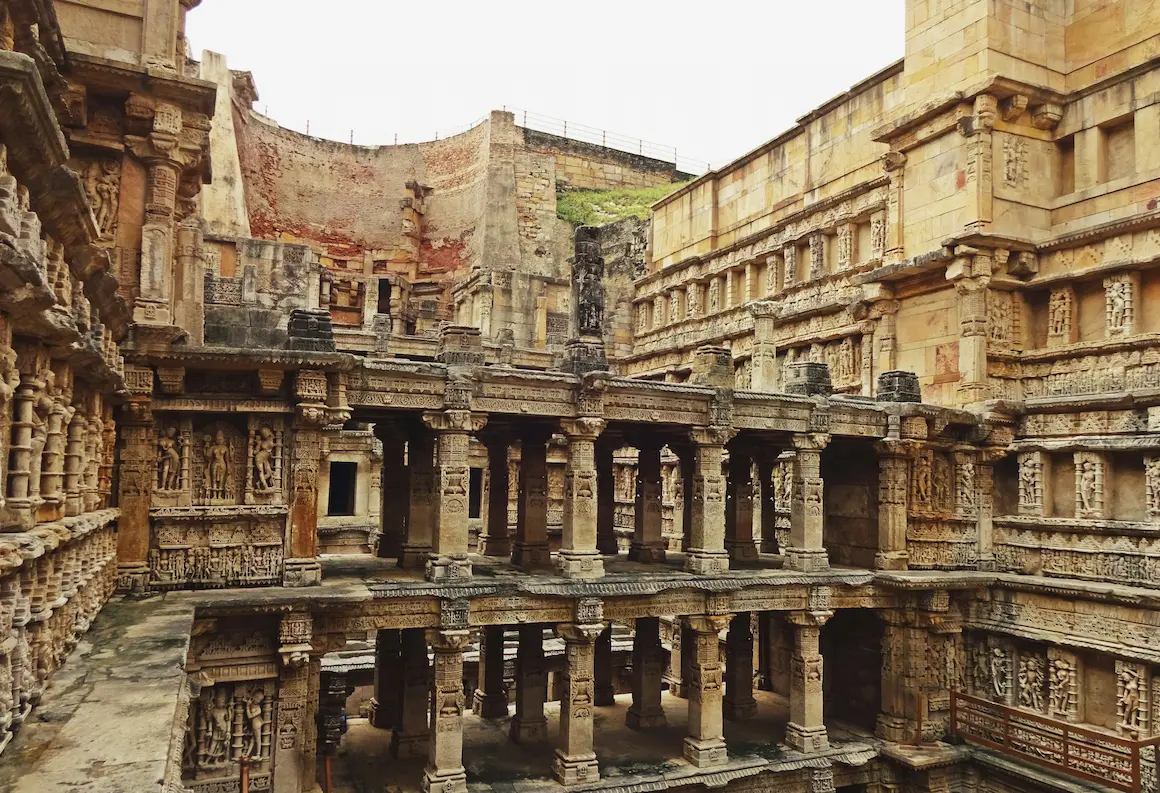The first time I took my kids to a stepwell in India, during our stay in Delhi, their little jaws dropped.
“My goodness, Mumma, is this a castle under the ground?” whispered my daughter, as I hovered nervously near the edge, counting every step.
That’s the magic of exploring India with kids—what feels ancient and overwhelming to us becomes pure adventure to them.
Stepwells in India aren’t just crumbling monuments; they’re living playgrounds of history, where families once gathered, prayed, and cooled off around water.
Known as baolis in Delhi, baoris in Rajasthan, and vavs in Gujarat, these underground marvels were built to survive droughts, store fresh water, and celebrate the importance of nature.
Walking through them today feels like time travel—but with children tugging at your sleeve, asking a hundred curious questions along the way.
For us, Gujarat’s stepwells were the real showstoppers. From the intricate carvings of Adalaj Vav to the sheer grandeur of Rani-ki-Vav (a UNESCO World Heritage site and featured on the ₹100 note), each stepwell had its own story, making history feel less like a textbook and more like an open-air playground.
Rajasthan’s baoris, with their mysterious stairways and hidden corners, were equally mesmerizing—especially when the kids raced down the zig-zag steps like it was a giant puzzle.
This isn’t a touristy checklist; it’s one mum’s honest account of exploring stepwells in India with kids—navigating awe, nerves, and endless “Mumma, can we go down just one more time?”
Whether you’re exploring Delhi’s baolis, Rajasthan’s baoris, or Gujarat’s vavs, stepwells are just one of many amazing destinations in India that are perfect for families.
Check out our guide to the Top 15 Kid-Friendly Places to Visit in India for more ideas to plan your next adventure with children.”
Are stepwells worth visiting in India with kids?
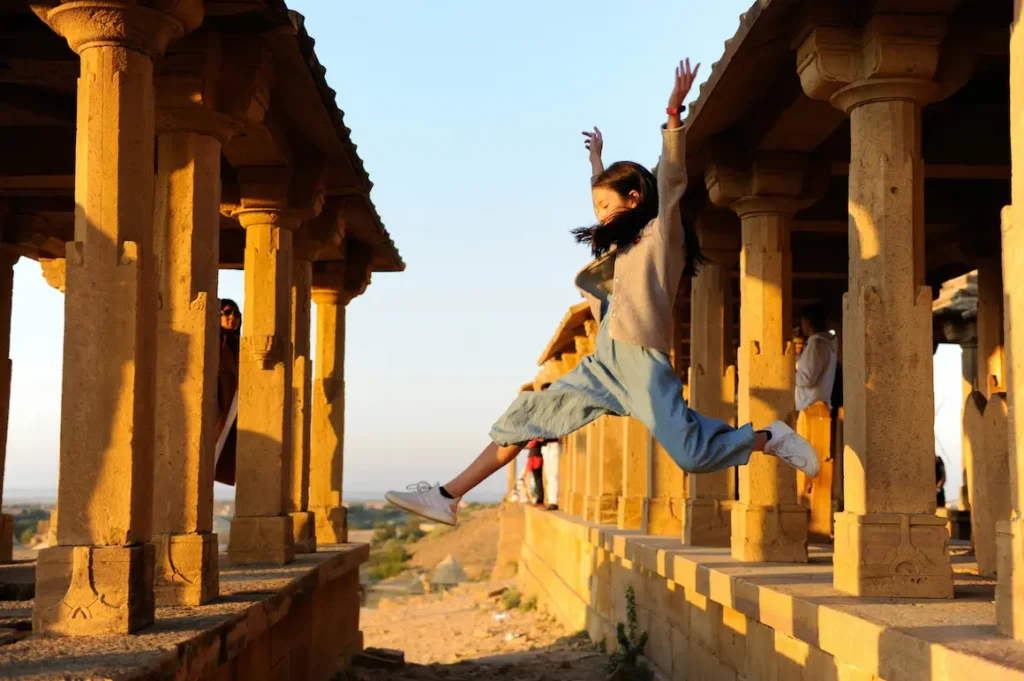
We’re the kind of family that loves to linger rather than rush—especially when exploring India with kids. Stepwells fit perfectly into that rhythm. They’re not just quick photo stops, but places where children can pause, explore, and let their imagination wander.
Kid-Friendly History – Stepwells are like giant underground water palaces that once kept entire cities alive. When you share their stories with children, their eyes light up—it becomes less of a history lesson and more of a fairy tale come to life.
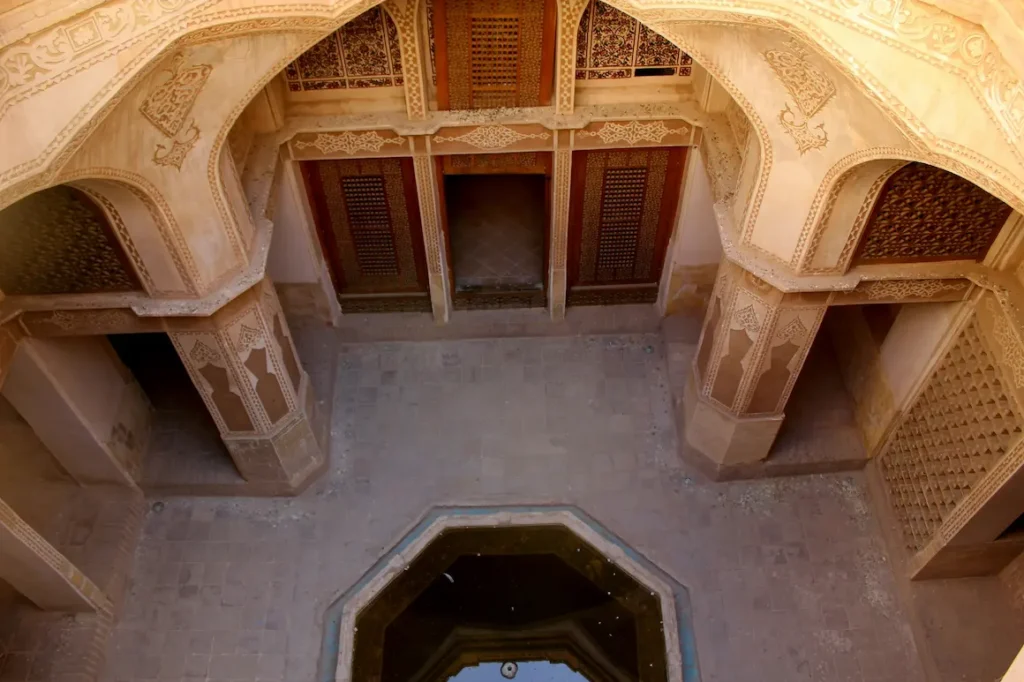
Cool Escape in Summer – The deeper you go, the cooler it gets. Many stepwells feel like natural air-conditioned chambers, offering a welcome break from India’s blazing sun. For us, they became shady pauses where the kids could safely explore while we caught our breath.
Adventure and Imagination – With endless steps, carvings, and passageways, stepwells feel like secret castles or giant mazes. My children turned our visits into treasure hunts, darting from staircase to staircase, discovering hidden corners along the way.
Parent Tip: Always remember that steps can be uneven, and railings are rare. Toddlers need a steady hand, but with a bit of care, the adventure is safe, memorable, and full of wonder.
Stepwells in Delhi – Easy Escapes for Families
When we first began exploring stepwells with kids in Delhi, it served as our testing ground. These hidden gems sit right in the middle of the bustling capital, yet feel like stepping into another world.
If you’re traveling India with kids, these are easy escapes to slow down, catch your breath, and let the children wander while soaking in history.
Agrasen ki Baoli – Echoes in the Heart of Delhi
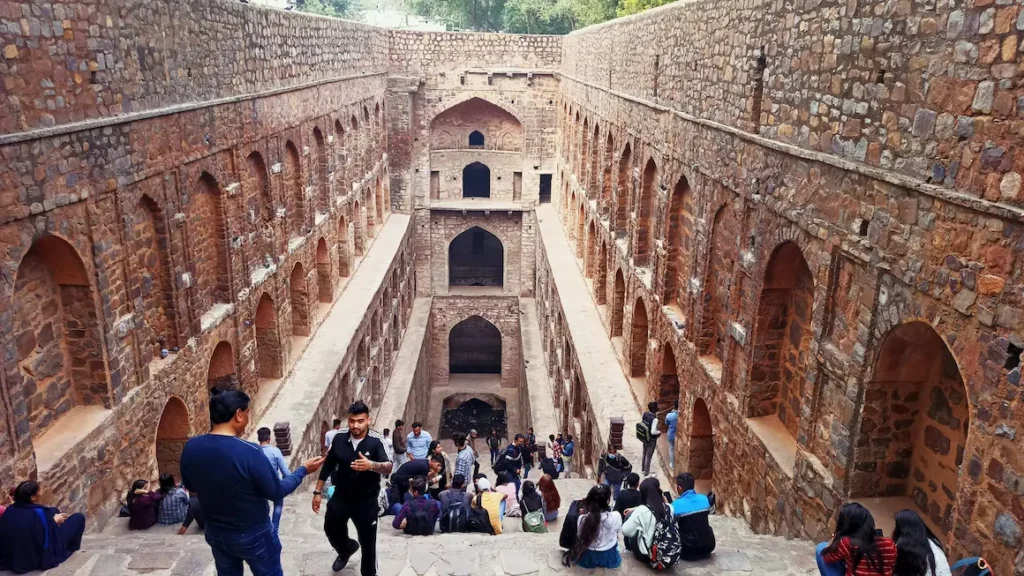
Just minutes from the chaos of Connaught Place, Agrasen ki Baoli suddenly opens up like a secret passage into the past.
Our kids loved running up and down the long staircase, giggling as they tested the echo game—and yes, the acoustics really are surreal!
Some say it’s haunted, but to little ones, it feels more like a giant adventure pit.
As a mum, my only tip: keep a steady eye on toddlers. The 108 steps are steep, and in India, you don’t always find railings or guards around monuments. We usually hold hands on the way down and give them freedom to run on the wide, flat landings.
It’s also Bollywood-famous (featured in PK and Sultan), which adds an extra spark if your kids are movie fans. And with skyscrapers peeking in the background, you can literally show them where old India meets modern.
Rajon ki Baoli – A Quiet Escape in Mehrauli
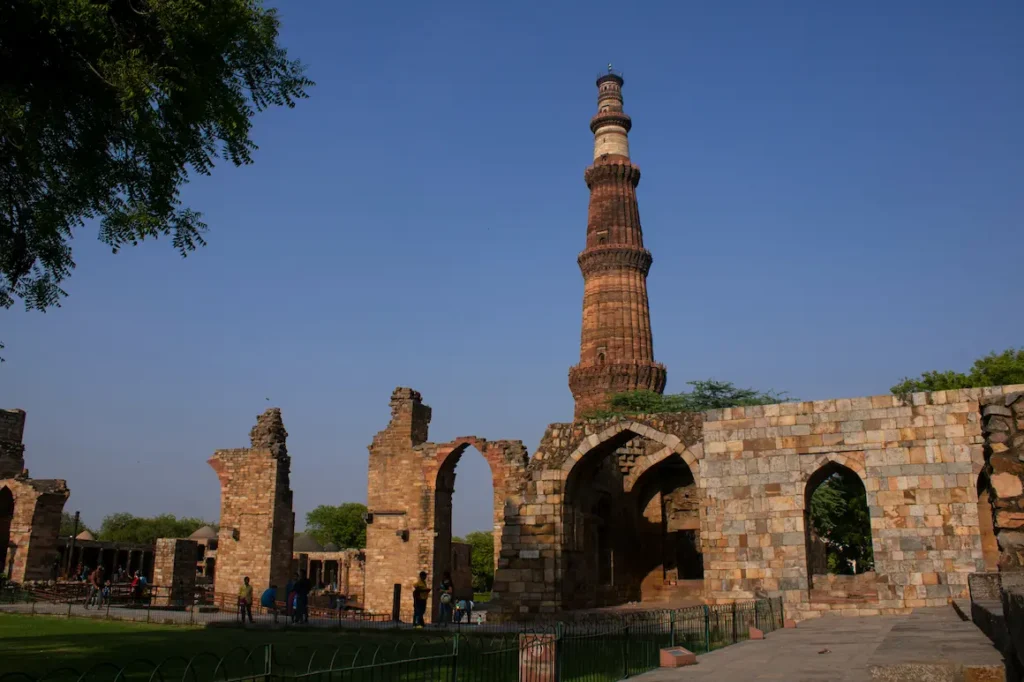
If Agrasen feels dramatic, Rajon ki Baoli is its peaceful cousin. Tucked inside Mehrauli Archaeological Park, this 16th-century stepwell is shaded, serene, and perfect for families who like to take things slow.
Kids treated the arches like doorways into a secret fort, and the three levels gave them plenty of exploring space without crowds pressing in.
We loved that it’s quieter than the main tourist sites—though never forget you’re still in India: carry water, wear comfy shoes, and keep an eye on those steps (especially if you’re visiting with toddlers).
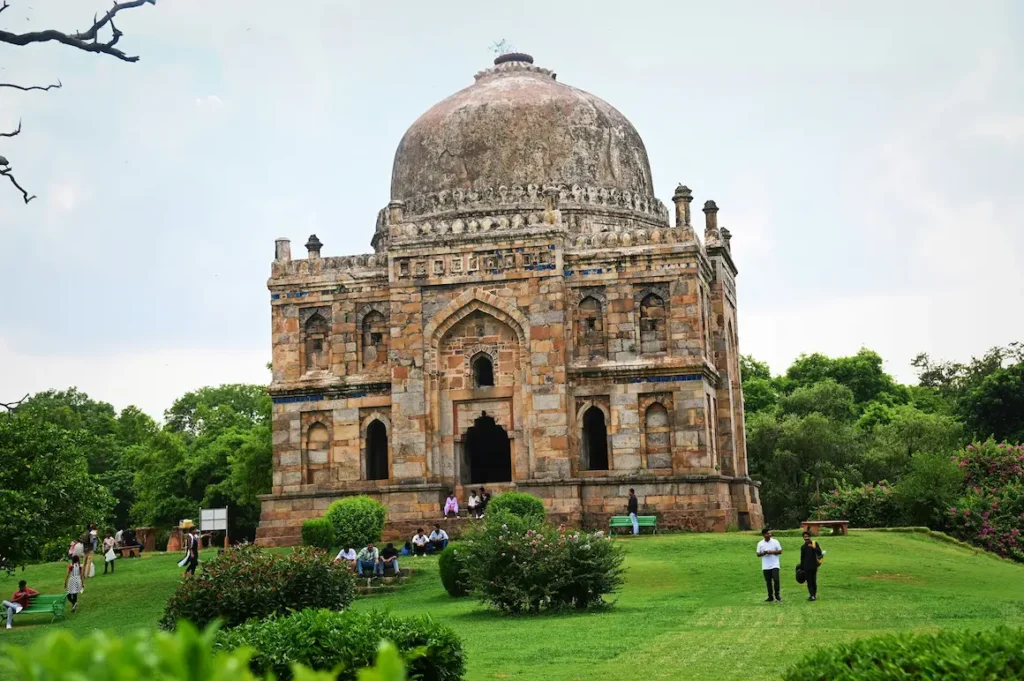
What we usually do is combine Rajon ki Baoli with a lazy picnic in Lodhi Garden or an evening stroll at India Gate lawns. That way, kids get both adventure and downtime, and we get a calmer day in the capital.
Stepwells in Rajasthan – Adventure + Royal Feel
Chand Baori Stepwell, Abhaneri—Rajasthan
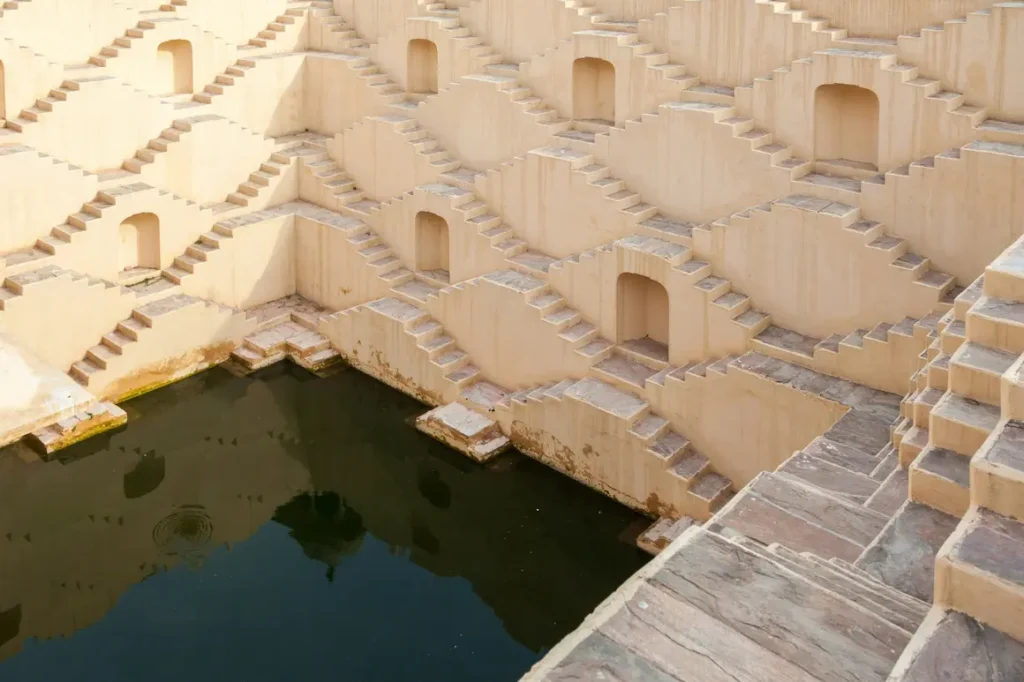
When we first stood at the edge of Chand Baori stepwell in Abhaneri, my kids couldn’t believe their eyes. Rows upon rows of crisscrossing steps tumble down into the earth—3,500 of them, perfectly symmetrical, plunging 13 stories deep.
It almost feels like looking at an optical illusion, and honestly, I had to hold my little one’s hand tight because the sheer depth can be dizzying.
Built in the 9th century, this Rajasthan stepwell is more than just a water reservoir—it’s an ancient engineering marvel that kept water cool even in the harsh desert heat.
This stepwell, built by Raja Chanda of the Nikumbh Rajput dynasty, is one of the deepest and largest in India.
If it looks familiar, it’s probably because you’ve spotted it in films like The Dark Knight Rises, which inspired the prison. My daughter was thrilled at the thought that “Batman was here!” which made the history lesson even more fun for her.
Just next door is the small but beautiful Harshat Mata Temple, where you can sit for a while before heading back to Jaipur.
Chand Baori also hosts the Abhaneri Festival every September–October, with traditional dances, cultural performances, and local crafts, bringing this tiny village to life.
Family Tip: Chand Baori is stunning but not stroller-friendly, and the steps are steep with safety rails. If you’re visiting India with kids, keep toddlers close, avoid climbing down, as it is restricted, and enjoy the view safely from the top.
Getting There: About 88 km from Jaipur, best reached by taxi with kids—buses are possible but not ideal for families.
For us, this wasn’t just a sightseeing stop—it was a reminder that India never lets you forget you’re in a land of living history, where even a simple village water tank can feel like a royal monument.
Toorji ka Jhalra, Jodhpur – Lively & Instagram-Famous
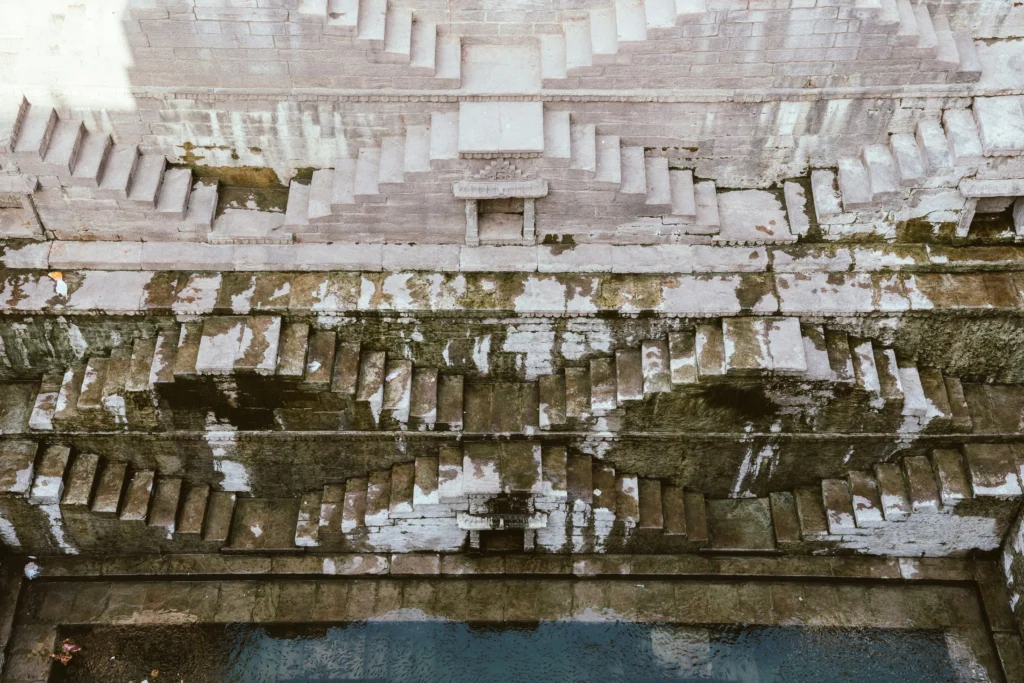
While Chand Baori feels like stepping back into history, Toorji ka Jhalra in Jodhpur has a completely different vibe—young, lively, and very much alive.
Tucked between the blue houses of the old city, this 18th-century stepwell, built by Maharaja Abhay Singh, was constructed to provide locals with a reliable source of freshwater. Its walls are decorated with intricate carvings of Hindu gods and goddesses, along with scenes from the Mahabharata and Ramayana epics.
The geometry of the steps is stunning, but what caught my kids’ attention weren’t the carvings—it was the local boys diving fearlessly into the water from dizzying heights. For us, Toorji ka Jhalra was where Rajasthan felt raw and real—not just a monument, but part of everyday life.
Many stepwells in Rajasthan are abandoned and crumbling, but Toorji ka Jhalra has been revived and re-loved, now surrounded by cozy cafés where you can sip a lime soda and watch local life unfold.
Family Tip: The best time to visit is October to March. Locals often bathe or swim in the morning, but everyone is welcome to visit, take photos, and even swim.
Getting There: Located in the city center, it’s just 30 minutes from Jodhpur Airport by local transport—easy to reach with kids..
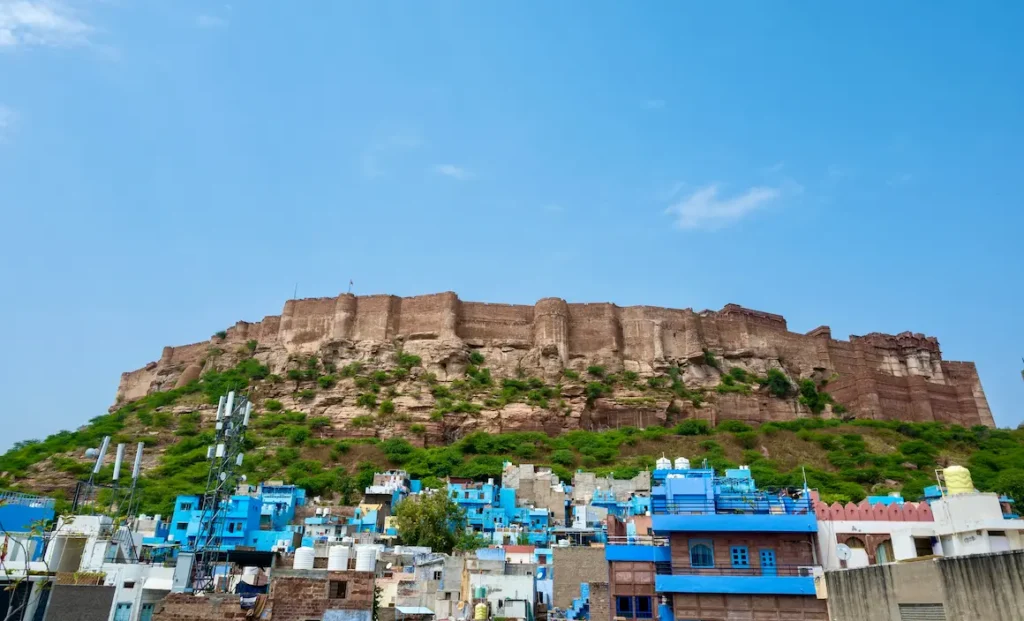
Family Tip: This stepwell is right in the heart of Jodhpur and easy to combine with Mehrangarh Fort or a walk through the blue lanes. Keep an extra eye on toddlers—the open water and high steps mean it’s best enjoyed from a safe distance.
Stepwells in Gujarat with Kids – Rani-ki-Vav, Adalaj & More Family Stops
If Rajasthan gave us stepwells that feel royal, Gujarat stepwells are where history, devotion, and art come alive. From love stories carved in stone to UNESCO-listed wonders, this state has some of the most breathtaking vavs (as they’re called locally).
Traveling to these stepwells with my kids, I realized they aren’t just monuments—they’re magical outdoor museums. Children can touch history, explore hidden corners, and marvel at the scale and artistry in ways that no textbook could offer.
For families, visiting stepwells becomes not only an educational adventure but also a fun day out where little legs can roam, climb, and imagine centuries of stories carved in stone.
Adalaj Stepwell, Near Ahmedabad – A Love Story in Stone
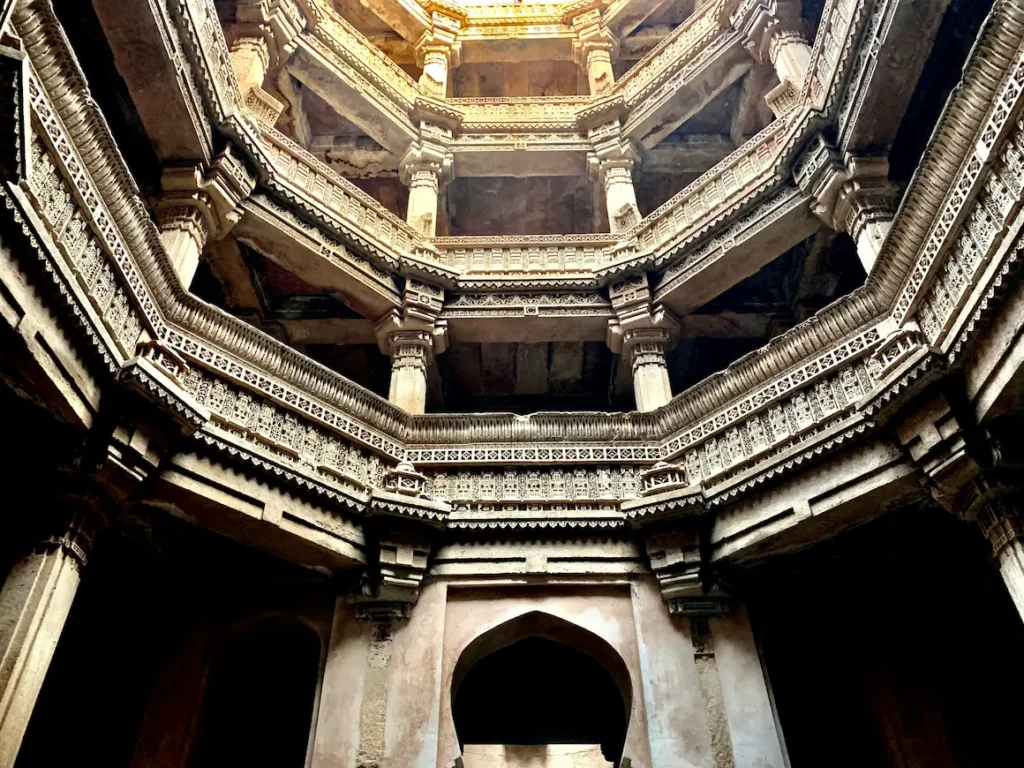
Our first stop in Gujarat was Adalaj Vav, just outside Ahmedabad. I still remember the hush that fell over the kids as we stepped down into its five stories of carved arcades. Birds, flowers, celestial figures—every wall seemed alive with detail.
Our kids whispered, “Mum, it’s like a stone storybook!” and honestly, that’s exactly how it felt.
Legend has it that this stepwell was built in 1499 by Queen Rudabai in memory of her husband. As we explored the play of light and shadow through its octagonal opening, it was easy to see why many call it one of the most romantic monuments in India.
Family Tip: Adalaj is just 30 minutes from Ahmedabad city, making it an easy half-day trip with kids. It’s shaded and cool inside, so perfect for a hot afternoon, but little ones will need a hand as the steps can be uneven.
Rani ki Vav, Patan – The Queen of Stepwells
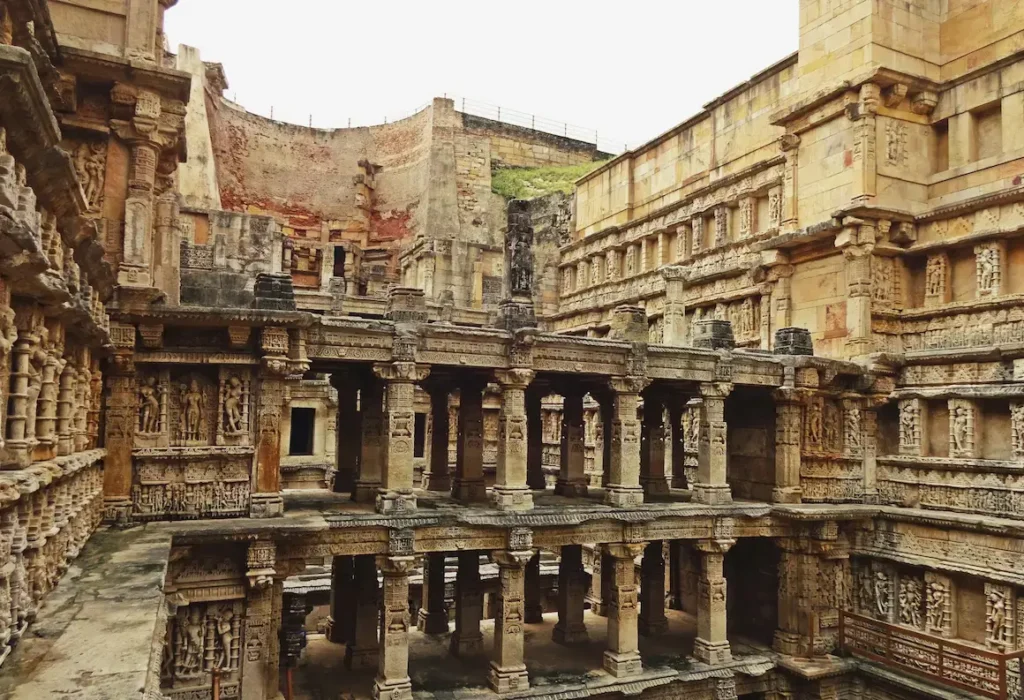
If you ask me to choose just one stepwell in all of India, it has to be Rani ki Vav in Gujarat. This UNESCO World Heritage Site completely took our breath away.
Built in the 11th century by Queen Udayamati in memory of her husband, it’s not just deep—it’s covered, head to toe, in divine carvings of gods, goddesses, apsaras, and mythical beings. Walking down its terraced steps felt like entering an underground temple.
What makes it even more exciting for families is the storytelling aspect—locals love to share tales of the secret tunnel (now sealed) that supposedly stretched 30 kilometers for escapes during wars. Suddenly, history wasn’t just old stones—it became an adventure story for our kids.
The pathways around Rani ki Vav are stroller-friendly, and the site itself is very well maintained (unlike the messy Stepswells of Delhi). But once you actually step down into the well, it’s a different story—there are thousands of narrow stone steps leading downward.
Strollers can’t go inside, so a baby carrier is your best friend here. Older kids will love the adventure of walking down themselves, but keep them close, as the steps can be steep and a little slippery.
Everything You Need to Know About Visiting Gujarat’s Stepwells with Kids (Rani-ki-Vav & Adalaj)
- The pathways and the whole site is very well maintained (a blessing when traveling with kids).
- There are shaded sitting areas, which help little ones rest between explorations.
- You’ll find clean facilities on site—rare but so helpful for family travel days.
- Amazing fact for kids: Rani ki Vav is so special that it’s featured on the ₹100 Indian currency note—your little ones will love spotting it when you pay for snacks or souvenirs.
Mum Tip: Pair your visit with a quick stop in nearby Patan, where the famous Patola saris are still woven. Watching the weavers at work gave our kids a peek into India’s living craft traditions.
If your family loves historical sites like these, you’ll also enjoy other kid-friendly destinations in India that balance culture, adventure, and fun for little explorers.
Surya Kund Stepwell, Modhera – A Sunlit Playground of History
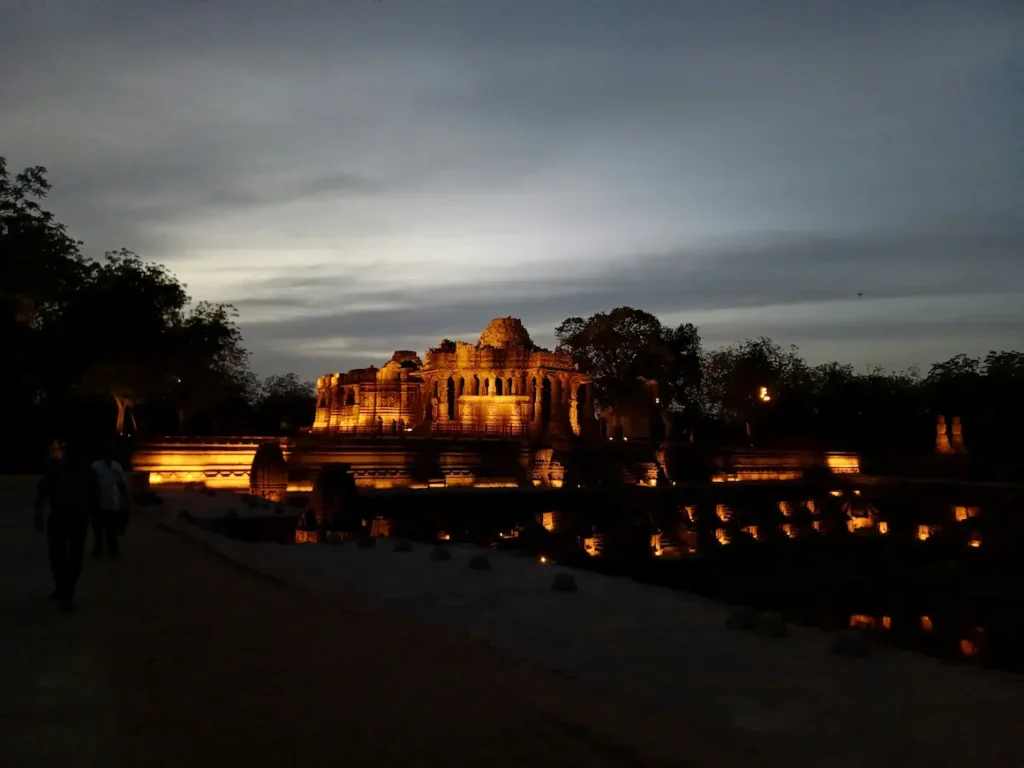
At Modhera Sun Temple, we thought the temple itself was the highlight—until the kids saw the giant Surya Kund stepwell.
Spread out like a sunken palace with more than 100 small shrines lining the steps, it instantly became their “maze to run in.” While we adults admired the symmetry and carvings, the children happily hopped from one platform to another, giggling under the evening sun.
Built in the 11th century by King Bhimdev I, this stepwell is living proof of Gujarat’s architectural genius.
If you’re lucky enough to visit during the Modhera Dance Festival, the entire space transforms into an open-air theatre, which I imagine must be a magical experience for you.
Family Tip: Combine Modhera with Rani ki Vav on a day trip from Ahmedabad. Just carry plenty of water—the sun here is sharp, even in winter.
Ramkund Stepwell, Bhuj – Our Kutch Highlight
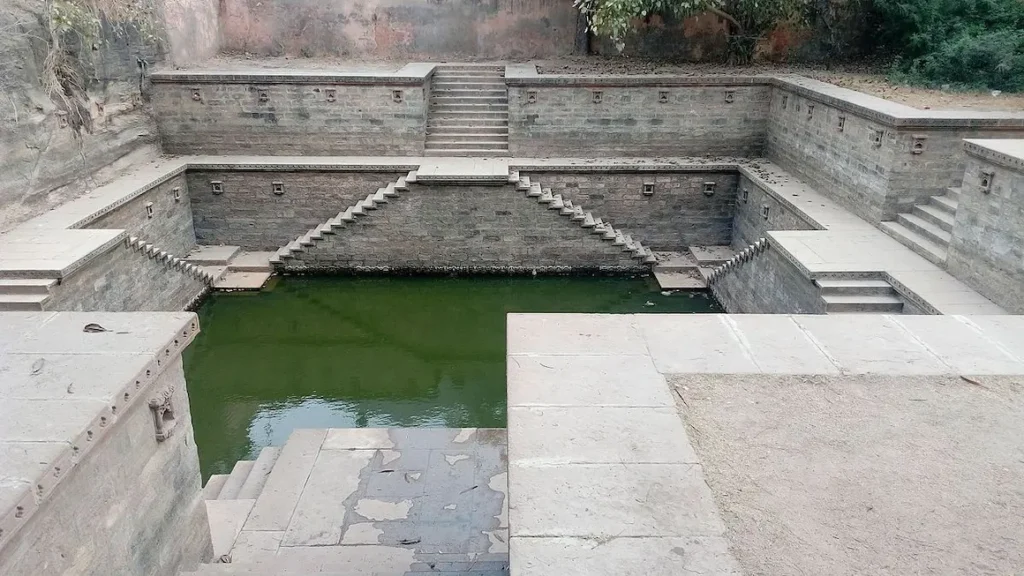
When we stayed a week in the Rann of Kutch during Rann Utsav, one of our unexpected highlights was the small but deeply spiritual Ramkund Stepwell in Bhuj.
Tucked behind the Ram Dhun Temple, this square stepwell is decorated with carvings of Lord Rama, Sita, Lakshman, and Hanuman, along with depictions of Vishnu’s ten incarnations.
The kids loved spotting the figures like a treasure hunt (“Look, Mum, there’s Hanuman!”), and for me, it was a moving reminder that even the quiet corners of Gujarat hold centuries of stories.
It’s not grand like Rani ki Vav, but it’s intimate, and that’s what made it special for us.
Family Tip: Since Ramkund is in Bhuj town, it’s easy to combine with the Kutch Museum and then head back to the desert for your evening at the Rann.
More Family-Friendly Attractions Nearby
The beauty of Gujarat is that these stepwells are just one piece of a bigger family adventure:
- Statue of Unity – the world’s tallest statue, with a children’s park and laser show.
- Rann of Kutch – camping under the stars and watching the salt desert glow at sunset was unforgettable for us.
- Bhuj & Crafts Villages – we spent hours exploring handicraft villages where the kids tried block printing and embroidery.
For our family, Gujarat’s stepwells weren’t just about history—they were about moments of awe, discovery, and those little surprises that remind you that traveling in India with kids is always an adventure you’ll never forget.
Is It Safe to Explore Stepwells in India with Kids? (Practical Tips for Families)
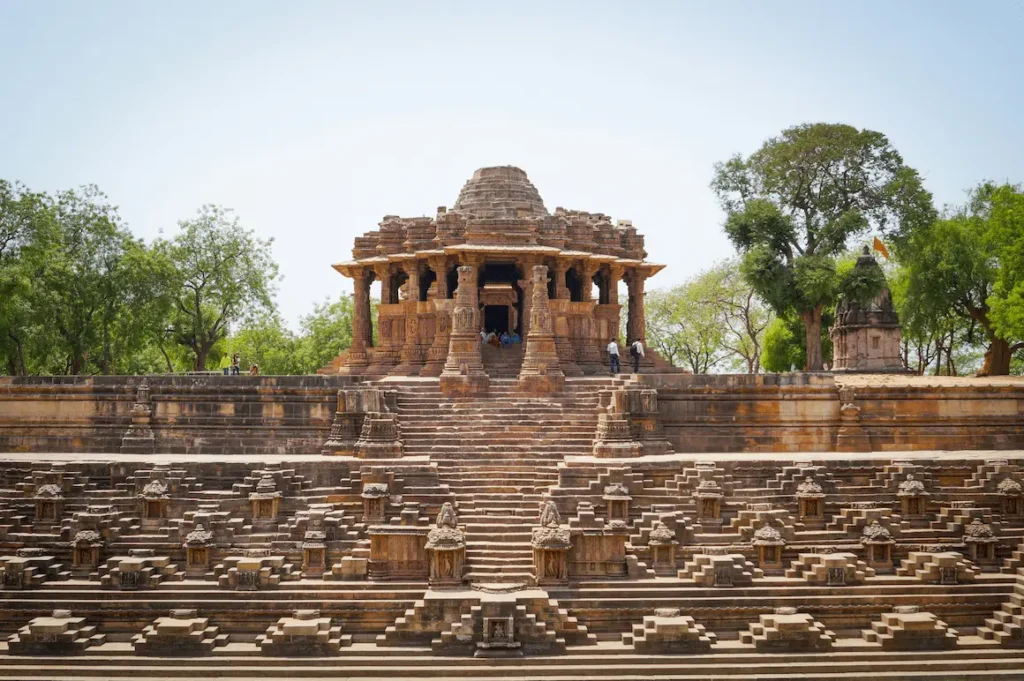
Stepwells in India are breathtaking—some look like they’ve been lifted straight out of a fantasy movie. But unlike Western heritage sites, they aren’t designed with kids’ safety in mind. There are no protective railings, warning signs, or staff watching out for little ones. It’s all on us parents. That’s why being prepared makes the difference between a magical visit and a stressful one. Here’s what I’ve learned from taking my own kids:
- Guardrails (or lack of them): Most stepwells don’t have barriers. Keep little ones in a baby carrier, hold hands firmly with younger kids, and set clear boundaries for older children before you go down the steps.
- Slippery steps: Many steps are uneven, polished smooth by centuries of use, and can be slippery—especially in monsoon season. Good shoes are a must.
- Toddlers vs. older kids: Stepwells are fascinating for school-age kids (who can follow safety rules), but stressful with toddlers who want to run everywhere. If you’re traveling with both, consider splitting the visit between parents.
- Best time of day: Visit in the morning or late afternoon. Avoid dark, crowded evenings when steps are harder to see and supervision is trickier.
- Pair with kid-friendly spots: Stepwells are magical for adults but can feel like “just stairs” to little ones. Balance the visit with a nearby playground, café with space to run, or even an ice cream stop.
Practical Mum Notes For Visiting Stepwells in India
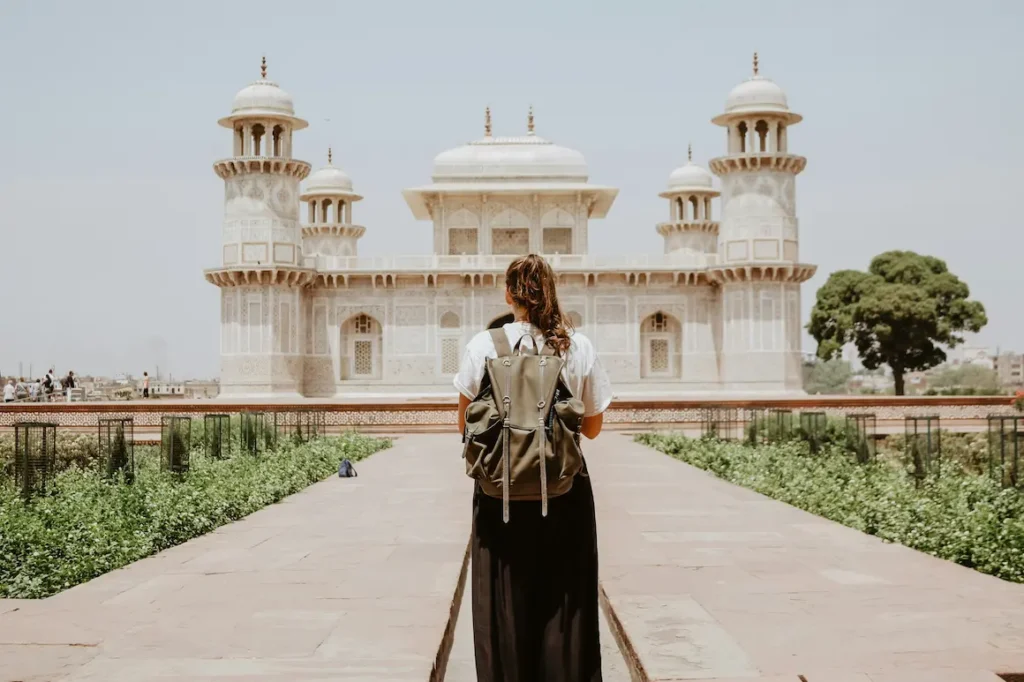
What to Pack to Visit Stepwells
Always keep a water bottle, some light snacks, hats, and sunscreen handy. In places like Rajasthan and Delhi, the sun reflects off the stone and feels much stronger than you expect—so these little things make a big difference when you’re out exploring stepwells with kids.
Timing matters
Visit in the morning or late afternoon when the sun isn’t harsh. Midday heat can make the stone unbearably hot, especially in Rajasthan and Gujarat, and kids will tire quickly.
Strollers in Stepwells
Strollers don’t work in stepwells—you’ll need to leave them at the entrance. The steps are usually steep, uneven, and sometimes slippery, which makes carrying them down unsafe. A baby carrier is by far the easiest option if you’re visiting with little ones. That way, you’ll have your hands free to hold onto the railing or steady yourself on the steps.
Washrooms near stepwells
Toilets are rarely close to stepwells—and they’re rarely kid-friendly. Try to plan a bathroom break before your visit, as facilities on-site are usually very basic or non-existent, except Stepwells in Gujarat, that has well-preserved sites and are quite easy to explore with kids.
Photo safety in Step wells
Some stepwells of India are Instagram-famous—like Toorji ka Jhalra in Jodhpur or Rani ki Vav in Gujarat—but remember that the steps can be narrow and steep. If you’re taking photos, stick to the wider, flat ledges where it’s safe, and avoid letting kids pose on the edges.
Supervision is everything
Stepwells are open structures without railings in many areas. Kids may be tempted to run ahead or peek over the edges, so it’s important to keep them close at all times
Best ages to visit Stepwells
Stepwells are best enjoyed with kids around 5 and up—they can handle the steps better and take in the history. With younger ones, be prepared for a lot of carrying or handholding, as the steps aren’t toddler-friendly, and even railing support is not properly maintained.
Why this matters: In India, historical sites like stepwells are magical but not child-proofed. Unlike back home, you won’t find signs, fences, or clear safety warnings. As parents, staying aware is the only way to make these visits safe and fun.
Should Stepwells Be Part of Your India with Kids Itinerary? (Our Take)
When you’re visiting India with kids, the big question is always—what’s safe, fun, and memorable for the whole family?
That’s exactly where stepwells shine. These centuries-old structures are not only architectural marvels but also calm, shaded spaces where children can explore without the constant buzz of traffic or crowds.
Our visit to Gujarat’s stepwells became one of the highlights of our trip.
My daughter loved counting the stairs, while my toddler was mesmerized by the echoes and cool air inside. With a little preparation—snacks, sun hats, and clear safety rules—stepwells are surprisingly doable and incredibly rewarding for families.
If you’re planning your India with kids itinerary, don’t skip them. Stepwells offer that rare combination of culture, history, and breathing space—a perfect balance to busier palaces, forts, and markets. For us, they went from “maybe too tricky with kids” to stories we’ll treasure and share for years.
Found this guide helpful?
Explore more family-friendly travel tips in my posts:
FAQs About Visiting Stepwells in India with Kids
- Which is the most famous stepwell in India?
Rani-ki-Vav in Patan, Gujarat, is a UNESCO World Heritage site and considered the most beautiful stepwell in India. It is also embossed on a 100-rupee Indian currency. - Is it safe to visit stepwells with children?
Yes, most stepwells are safe if you keep an eye on young kids—some have steep steps and uneven stones. Choose family-friendly ones like Adalaj or Rani-ki-Vav that have open, spacious layouts. - How do I plan a visit to stepwells in Gujarat with kids?
Combine a stepwell visit with nearby attractions like Modhera Sun Temple or Ahmedabad city for a balanced, family-friendly day. - Are stepwells stroller-friendly?
No, due to stairs. A baby carrier works better for infants/toddlers.

